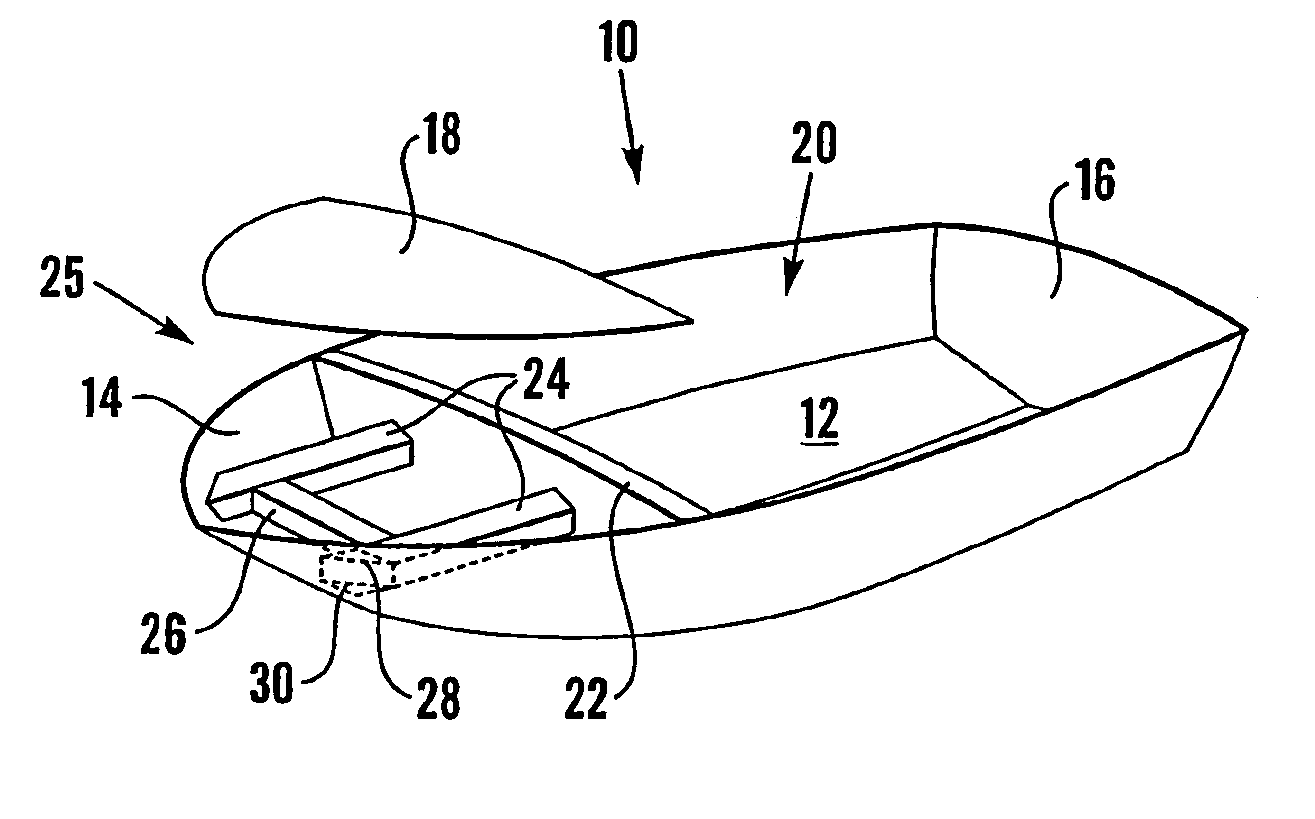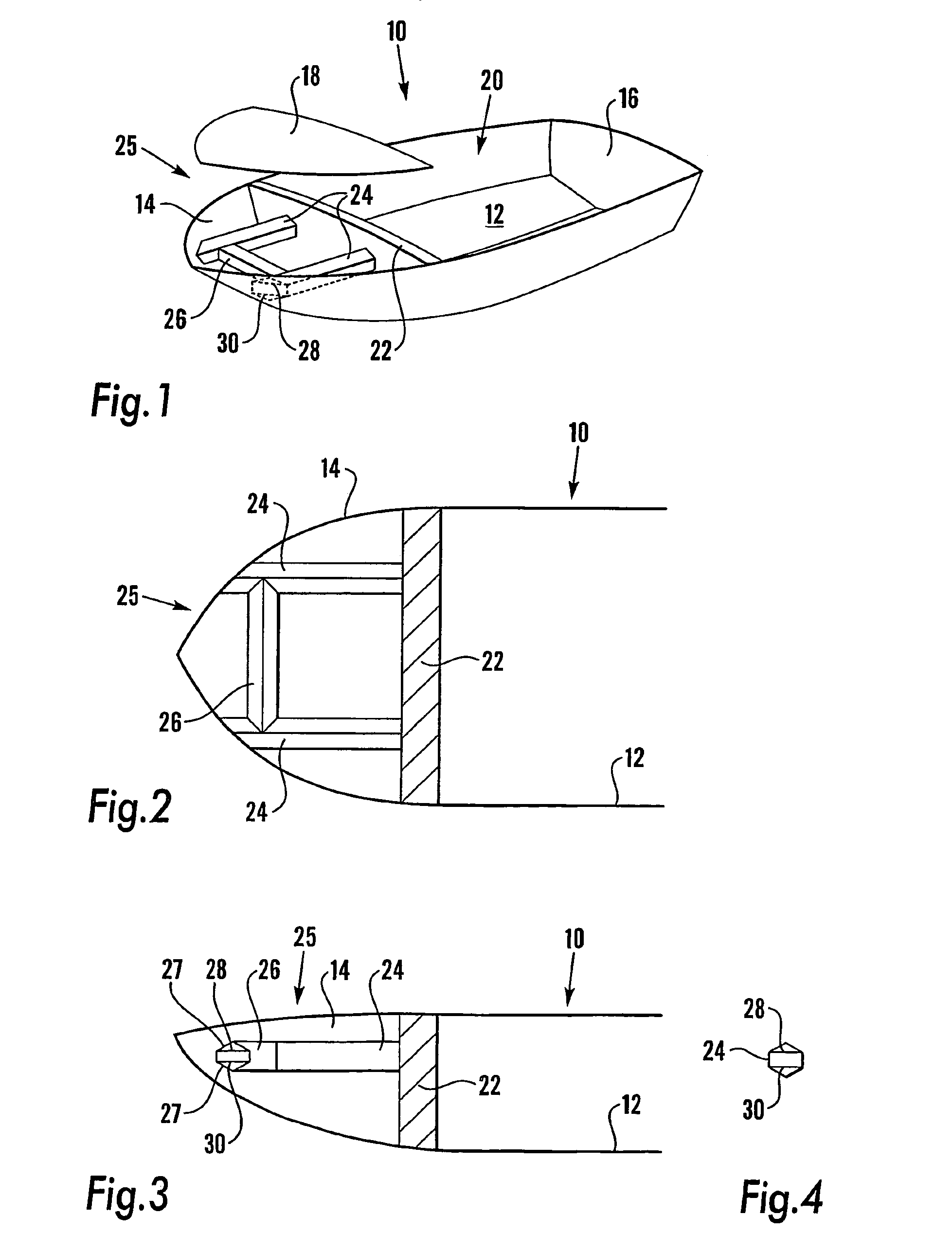Marine craft
a protection arrangement and marine technology, applied in waterborne vessels, floating buildings, vessel construction, etc., can solve the problems of sinking of marine craft, serious injury to helmsmen and passengers on board, and inability to absorb crash energy from marine craft, so as to reduce the risk of sinking the craft as a result of collisions
- Summary
- Abstract
- Description
- Claims
- Application Information
AI Technical Summary
Benefits of technology
Problems solved by technology
Method used
Image
Examples
Embodiment Construction
[0038]Referring firstly to FIGS. 1 to 4, a first embodiment of a marine craft in accordance with the present invention is generally indicated at 10. The craft has a hull 12 which defines a bow portion 14 and a stern portion 16. The craft also has a bow top 18 (shown detached from the marine craft) for enclosing the bow portion. A passenger area of the craft 10 is indicated generally at 20. The passenger area 20 is located within the hull and is separated from the bows 14 by a structural bulkhead 22, which is positioned transversely in the craft 10 between the sides of the hull 12. Preferably, a water tight seal is formed between the edges of the bulkhead and the hull 12 and the bow top 18 (when fitted), to prevent, or at least to resist, water from entering the passenger area 20 from the bows should the bows become flooded, for example, in the event of the bows rupturing during a collision of the craft.
[0039]A deformable or crushable structure, indicated at 25, for absorbing impact ...
PUM
 Login to View More
Login to View More Abstract
Description
Claims
Application Information
 Login to View More
Login to View More - R&D
- Intellectual Property
- Life Sciences
- Materials
- Tech Scout
- Unparalleled Data Quality
- Higher Quality Content
- 60% Fewer Hallucinations
Browse by: Latest US Patents, China's latest patents, Technical Efficacy Thesaurus, Application Domain, Technology Topic, Popular Technical Reports.
© 2025 PatSnap. All rights reserved.Legal|Privacy policy|Modern Slavery Act Transparency Statement|Sitemap|About US| Contact US: help@patsnap.com



